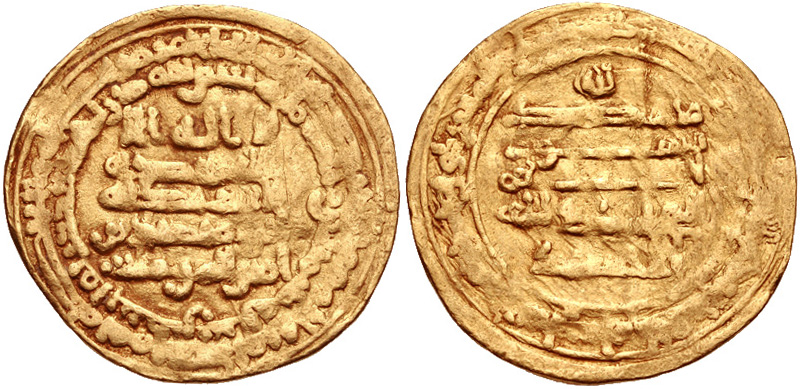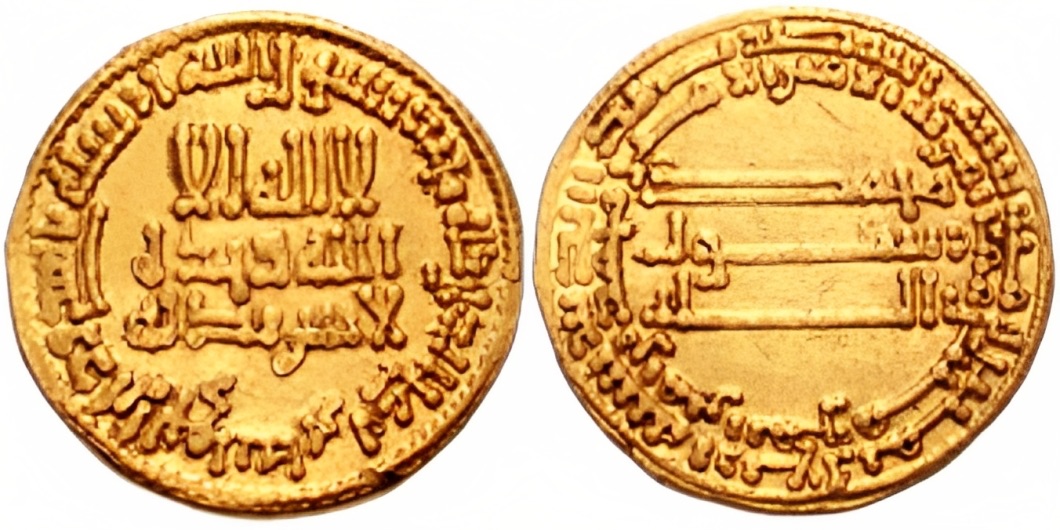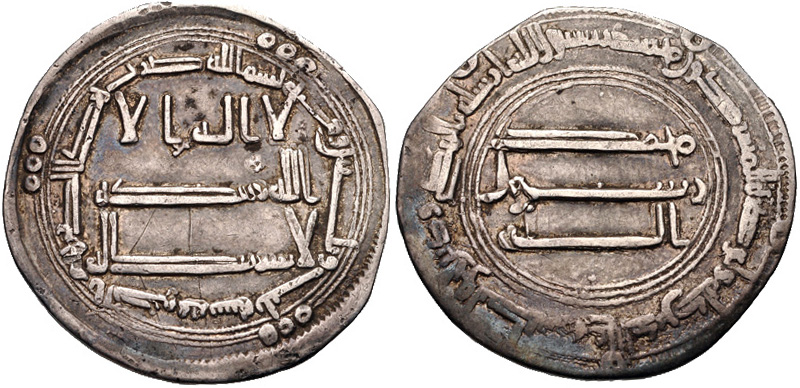|
Jabir Ibn Al-Ash'ath Al-Ta'i
Jabir ibn al-Ash'ath ibn Yahya al-Ta'i () was a governor of Egypt, from 811 to 812. He was appointed in March 811 by the caliph al-Amin, replacing Hatim ibn Harthamah ibn A'yan. Soon afterwards however he was forced to contend with the outbreak of civil war between al-Amin and his brother al-Ma'mun, and before long his continued loyalty to the former had put him at odds with a faction of the local ''jund'' led by al-Sari ibn al-Hakam, which favored recognizing al-Ma'mun as caliph instead. In the spring of 812 the ''jund'', with the encouragement of al-Ma'mun, openly switched their allegiance and revolted, and Jabir was overthrown from his position. A partisan of al-Ma'mun, Abbad ibn Muhammad ibn Hayyan, then assumed the governorship and took up power in Fustat Fusṭāṭ ( ar, الفُسطاط ''al-Fusṭāṭ''), also Al-Fusṭāṭ and Fosṭāṭ, was the first capital of Egypt under Muslim rule, and the historical centre of modern Cairo. It was built adjacent to what is ... [...More Info...] [...Related Items...] OR: [Wikipedia] [Google] [Baidu] |
List Of Rulers Of Islamic Egypt
Governors of Arab Egypt (640–1250) and Mamluk Egypt (1250–1517). For other periods, see the list of rulers of Egypt. Rashidun Caliphate (640–658) Umayyad Caliphate (659–750) Dates taken from John Stewart's ''African States and Rulers'' (2005). Abbasid Caliphate (750–969) Governors during the first Abbasid period (750–868) Dates taken from John Stewart's ''African States and Rulers'' (2005). Autonomous emirs of the Tulunid dynasty (868–905) Dates taken from John Stewart's ''African States and Rulers'' (2005). Governors during the second Abbasid period (905–935) Dates taken from John Stewart's ''African States and Rulers'' (2005). Autonomous emirs of the Ikhshidid dynasty (935–969) Dates taken from John Stewart's ''African States and Rulers'' (2005). Fatimid Dynasty (969–1171) Dates for Caliphs taken from John Stewart's ''African States and Rulers'' (2005). Ayyubid Sultanate (1171–1252) Dates taken from John Stewart's ''African States ... [...More Info...] [...Related Items...] OR: [Wikipedia] [Google] [Baidu] |
Al-Amin
Abu Musa Muhammad ibn Harun al-Rashid ( ar, أبو موسى محمد بن هارون الرشيد, Abū Mūsā Muḥammad ibn Hārūn al-Rashīd; April 787 – 24/25 September 813), better known by his laqab of Al-Amin ( ar, الأمين, al-Amīn), was the sixth Arab Abbasid caliph from 809 to 813. Al-Amin succeeded his father, Harun al-Rashid, in 809 and ruled until he was deposed and killed in 813, during the civil war by his half-brother, al-Ma'mun. Early life and the issue of succession Muhammad, the future al-Amin, was born in April 787 to the Abbasid caliph Harun al-Rashid () and Zubayda, herself descended from the second Abbasid caliph, al-Mansur (). Muhammad had an elder half-brother, Abdallah, the future al-Ma'mun (), who had been born in September 786. However, Abdallah's mother was a Persian slave concubine, and his pure Abbasid lineage gave Muhammad seniority over his half-brother. Indeed, he was the only Abbasid caliph to claim such descent. Already in 792, Har ... [...More Info...] [...Related Items...] OR: [Wikipedia] [Google] [Baidu] |
Hatim Ibn Harthamah Ibn A'yan
Hatim ibn Harthamah ibn A'yan () (died after 816) was a ninth-century provincial governor for the Abbasid Caliphate, serving in Egypt (810–811) and Arminiyah and Adharbayjan (816). Career Hatim was the son of Harthama ibn A'yan, a high-ranking general during the caliphates of al-Hadi, Harun al-Rashid and al-Ma'mun. He is mentioned as having served as chief of security (''shurtah'') for his father during the latter's governorship of Egypt in 794–795, and was later himself appointed over that province by the caliph al-Amin in 810. During his year-long administration he brought an end to ongoing disturbances in the Hawf district by forming an agreement with its residents regarding issues of taxation, and defeated a separate revolt by the people of Tanu and Tumayy led by Uthman ibn al-Mustanir al-Judhami. He was also responsible for building the palace in the Muqattam hills known as the Qubbat al-Hawa ("Dome of the Winds"), which was used by all subsequent governors until its ... [...More Info...] [...Related Items...] OR: [Wikipedia] [Google] [Baidu] |
Abbad Ibn Muhammad Ibn Hayyan
Abbad ibn Muhammad ibn Hayyan al-Balkhi () was a governor of Egypt for the Abbasid Caliphate, from 812 to 813. Career A ''mawla'' of the tribe of Kindah, Abbad was initially an administrator (''wakil'') of the Egyptian estates belonging to the general Harthamah ibn A'yan. After the breakout of the fourth civil war in 811 he encouraged the Egyptian people to cast off their loyalty to the caliph al-Amin and support his rival al-Ma'mun instead, and when al-Amin's governor Jabir ibn al-Ash'ath al-Ta'i was overthrown by an army coup in early 812 he took his place and formally gave the oath of allegiance to al-Ma'mun. He soon however found himself faced with serious opposition from the Qays of the Hawf region, whose leader Rabi'ah ibn Qays ibn Zubayr al-Jurashi had been induced by al-Amin to take up arms on his behalf, and over the course of the following months his forces suffered several losses and were compelled to defend Fustat Fusṭāṭ ( ar, الفُسطاط ''al-Fusṭ� ... [...More Info...] [...Related Items...] OR: [Wikipedia] [Google] [Baidu] |
Egypt
Egypt ( ar, مصر , ), officially the Arab Republic of Egypt, is a transcontinental country spanning the northeast corner of Africa and southwest corner of Asia via a land bridge formed by the Sinai Peninsula. It is bordered by the Mediterranean Sea to the north, the Gaza Strip of Palestine and Israel to the northeast, the Red Sea to the east, Sudan to the south, and Libya to the west. The Gulf of Aqaba in the northeast separates Egypt from Jordan and Saudi Arabia. Cairo is the capital and largest city of Egypt, while Alexandria, the second-largest city, is an important industrial and tourist hub at the Mediterranean coast. At approximately 100 million inhabitants, Egypt is the 14th-most populated country in the world. Egypt has one of the longest histories of any country, tracing its heritage along the Nile Delta back to the 6th–4th millennia BCE. Considered a cradle of civilisation, Ancient Egypt saw some of the earliest developments of writing, agr ... [...More Info...] [...Related Items...] OR: [Wikipedia] [Google] [Baidu] |
Al-Amin
Abu Musa Muhammad ibn Harun al-Rashid ( ar, أبو موسى محمد بن هارون الرشيد, Abū Mūsā Muḥammad ibn Hārūn al-Rashīd; April 787 – 24/25 September 813), better known by his laqab of Al-Amin ( ar, الأمين, al-Amīn), was the sixth Arab Abbasid caliph from 809 to 813. Al-Amin succeeded his father, Harun al-Rashid, in 809 and ruled until he was deposed and killed in 813, during the civil war by his half-brother, al-Ma'mun. Early life and the issue of succession Muhammad, the future al-Amin, was born in April 787 to the Abbasid caliph Harun al-Rashid () and Zubayda, herself descended from the second Abbasid caliph, al-Mansur (). Muhammad had an elder half-brother, Abdallah, the future al-Ma'mun (), who had been born in September 786. However, Abdallah's mother was a Persian slave concubine, and his pure Abbasid lineage gave Muhammad seniority over his half-brother. Indeed, he was the only Abbasid caliph to claim such descent. Already in 792, Har ... [...More Info...] [...Related Items...] OR: [Wikipedia] [Google] [Baidu] |
Fourth Fitna
The Fourth Fitna or Great Abbasid Civil War resulted from the conflict between the brothers al-Amin and al-Ma'mun over the succession to the throne of the Abbasid Caliphate. Their father, Caliph Harun al-Rashid, had named al-Amin as the first successor, but had also named al-Ma'mun as the second, with Khurasan granted to him as an appanage. Later a third son, al-Qasim, had been designated as third successor. After Harun died in 809, al-Amin succeeded him in Baghdad. Encouraged by the Baghdad court, al-Amin began trying to subvert the autonomous status of Khurasan, and al-Qasim was quickly sidelined. In response, al-Ma'mun sought the support of the provincial élites of Khurasan and made moves to assert his own autonomy. As the rift between the two brothers and their respective camps widened, al-Amin declared his own son Musa as his heir and assembled a large army. In 811, al-Amin's troops marched against Khurasan, but al-Ma'mun's general Tahir ibn Husayn defeated them in the Battl ... [...More Info...] [...Related Items...] OR: [Wikipedia] [Google] [Baidu] |
Al-Ma'mun
Abu al-Abbas Abdallah ibn Harun al-Rashid ( ar, أبو العباس عبد الله بن هارون الرشيد, Abū al-ʿAbbās ʿAbd Allāh ibn Hārūn ar-Rashīd; 14 September 786 – 9 August 833), better known by his regnal name Al-Ma'mun ( ar, المأمون, al-Maʾmūn), was the seventh Abbasid caliph, who reigned from 813 until his death in 833. He succeeded his half-brother al-Amin after a civil war, during which the cohesion of the Abbasid Caliphate was weakened by rebellions and the rise of local strongmen; much of his domestic reign was consumed in pacification campaigns. Well educated and with a considerable interest in scholarship, al-Ma'mun promoted the Translation Movement, the flowering of learning and the sciences in Baghdad, and the publishing of al-Khwarizmi's book now known as "Algebra". He is also known for supporting the doctrine of Mu'tazilism and for imprisoning Imam Ahmad ibn Hanbal, the rise of religious persecution ('' mihna''), and for the r ... [...More Info...] [...Related Items...] OR: [Wikipedia] [Google] [Baidu] |
Jund
Under the early Caliphates, a ''jund'' ( ar, جند; plural ''ajnad'', اجناد) was a military division, which became applied to Arab military colonies in the conquered lands and, most notably, to the provinces into which Greater Syria (the Levant) was divided. ''Jund'' later acquired various meanings throughout the Muslim world. Origin The term ''jund'' derives from Parthian or Iranian word of "Gund" which was later on adopted by Islamic armies after the conquest of Iran. Today, "Gund" still refers to "town, village" as well as gathering (military) in Kurdish which was passed to Arabic with similar meaning of a group of supporters (also could refer to a group in general like in a city) '' Lisan al-Arab'' , and appears in the ''Quran'' to designate an armed troop. Under the Umayyad Caliphate it came to be applied in a more technical sense to "military settlements and districts in which were quartered Arab soldiers who could be mobilized for seasonal campaigns or for more pr ... [...More Info...] [...Related Items...] OR: [Wikipedia] [Google] [Baidu] |
Al-Sari Ibn Al-Hakam
Al-Sari ibn al-Hakam ibn Yusuf al-Zutti () (died November 820), also known as Al-Sari ibn al-Hakam al-Balkhi served twice as the Abbasid Caliphate's governor of Egypt. Career Al-Sari ibn al-Hakam was of Zutt origin. According to al-Kindi, he was initially an unimportant member of the so-called ''abna’ al-dawla'', the Khurasani troops that formed the mainstay of the Abbasid regime. He came to Egypt in 799 in the retinue of al-Layth ibn al-Fadl, and soon rose to a position of influence within the local ''abna’''. The early years of the 9th century were a time of turmoil for Egypt, where the old-established elites of the original Arab settlers of Fustat losing power to the ''abna’'' and their rivals, the Yemeni tribes of northern Egypt, grouped around Abd al-Aziz ibn al-Wazir al-Jarawi. Taking advantage of the collapse of Abbasid central authority due to the civil war between al-Amin and al-Ma'mun, Abd al-Aziz and al-Sari, with their respective factions, engaged in a vic ... [...More Info...] [...Related Items...] OR: [Wikipedia] [Google] [Baidu] |
Fustat
Fusṭāṭ ( ar, الفُسطاط ''al-Fusṭāṭ''), also Al-Fusṭāṭ and Fosṭāṭ, was the first capital of Egypt under Muslim rule, and the historical centre of modern Cairo. It was built adjacent to what is now known as Old Cairo by the Rashidun Muslim general 'Amr ibn al-'As immediately after the Muslim conquest of Egypt in AD 641, and featured the Mosque of Amr, the first mosque built in Egypt. The city reached its peak in the 12th century, with a population of approximately 200,000.Williams, p. 37 It was the centre of administrative power in Egypt, until it was ordered burnt in 1168 by its own vizier, Shawar, to keep its wealth out of the hands of the invading Crusaders. The remains of the city were eventually absorbed by nearby Cairo, which had been built to the north of Fustat in 969 when the Fatimids conquered the region and created a new city as a royal enclosure for the Caliph. The area fell into disrepair for hundreds of years and was used as a rubbish d ... [...More Info...] [...Related Items...] OR: [Wikipedia] [Google] [Baidu] |
Rabi'ah Ibn Qays Ibn Zubayr Al-Jurashi
Rabīʿa ibn Nizar ( ar, ربيعة بن نزار) is the patriarch of one of two main branches of the "North Arabian" (Adnanite) tribes, the other branch being founded by Mudhar. Branches According to the classical Arab genealogists, the following are the important branches of Rabīʿa: * Abd al-Qays * Anazzah * Anz ibn Wa'il * Bakr ibn Wa'il, which also included the following sub-tribes ** Banu Hanifa ** Banu Shayban ** Banu Qays ibn Tha'laba ** Taym Allah (or Taym Allat) ** Banu Yashkur * Taghlib ibn Wa'il * al-Nammir ibn Qasit Location Like the rest of the Adnanite Arabs, legend has it that Rabīʿa's original homelands were in the Tihamah region of western Arabia, from which Rabīʿa migrated northwards and eastwards. Abd al-Qays were one of the inhabitants of the region of Eastern Arabia, including the modern-day islands of Bahrain, and were mostly sedentary. Bakr's lands stretched from al-Yamama (the region around modern-day Riyadh) to northwestern Mesopotamia. The ma ... [...More Info...] [...Related Items...] OR: [Wikipedia] [Google] [Baidu] |





